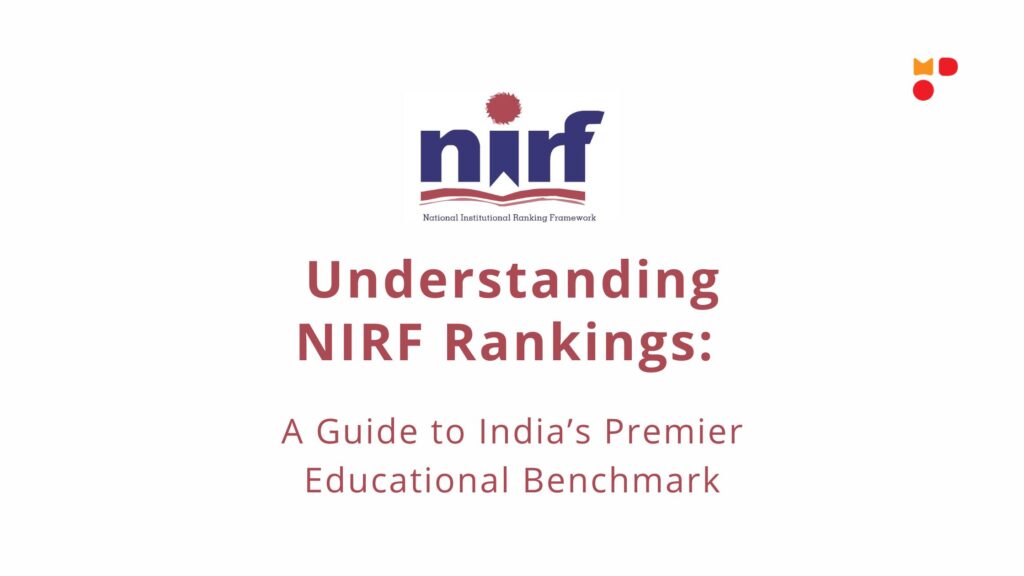In the landscape of higher education in India, NIRF Rankings stand as a significant benchmark for assessing the quality and performance of universities. Launched by the Ministry of Education in 2015, NIRF Rankings provide a reliable, transparent, and comprehensive system to rank institutions across various parameters.
Whether you are a prospective student, an academic, or simply curious about educational standards in India, understanding NIRF Rankings can offer valuable insights. Here’s a detailed guide on NIRF Rankings and their importance.
What is NIRF?

The Essence of NIRF: The National Institutional Ranking Framework (NIRF) is an initiative by the Government of India aimed at promoting excellence in education. The framework outlines a methodology to rank institutions across the country based on objective criteria.
It aims to encourage academic quality and foster a competitive spirit among institutions to continuously improve their standards.
Key Parameters of NIRF Rankings
How Universities are Evaluated: NIRF rankings are based on five broad parameters, each contributing to a comprehensive evaluation of an institution’s performance:
1. Teaching, Learning, and Resources (TLR)
Faculty-Student Ratio: The ratio of full-time faculty to students.
Faculty Qualification: The proportion of faculty with Ph.D. degrees.
Library and Laboratory Resources: Availability and quality of academic resources.
Infrastructure: Overall quality of campus infrastructure and facilities.
2. Research and Professional Practice (RP)
Publications: Number and quality of research papers published in peer-reviewed journals.
Patents: Number of patents filed and granted.
Research Funding: Grants received for research from government and private sectors.
3. Graduation Outcomes (GO)
Student Graduation Rate: The percentage of students who graduate on time.
Average Salary: The median salary of graduates.
Higher Studies: Percentage of graduates pursuing higher education.
4. Outreach and Inclusivity (OI)
Diversity: The representation of women, economically disadvantaged groups, and differently-abled individuals.
Regional Diversity: Enrollment of students from various regions and states.
5. Perception (PR)
Reputation: The institution’s reputation among employers, academics, and the public.
Importance of NIRF Rankings

Why NIRF Matters:
Informed Decision-Making:
For students and parents, NIRF rankings provide a credible source of information to make informed decisions about college admissions.
Benchmarking Excellence:
Institutions use NIRF rankings to benchmark their performance against peers and strive for continuous improvement.
Government and Policy Making:
Policymakers utilize NIRF data to identify areas requiring investment and reform, ensuring balanced growth across the educational sector.
Global Recognition:
High NIRF rankings enhance an institution’s reputation globally, attracting international students and collaborations.
How to Interpret NIRF Rankings
Understanding the Rankings:
Overall Rankings:
The overall rankings provide a holistic view of an institution’s performance across all parameters.
Category-Specific Rankings:
NIRF also provides category-specific rankings for universities, colleges, engineering, management, pharmacy, law, medical, architecture, and dental institutions.
These rankings help students choose programs aligned with their career aspirations.
Year-on-Year Trends:
Analyzing year-on-year trends can offer insights into an institution’s growth trajectory and consistency in performance.
Conclusion
NIRF rankings serve as a crucial tool for assessing the quality of higher education institutions in India. By providing a transparent and comprehensive evaluation based on objective parameters, NIRF helps students, educators, and policymakers make informed decisions.
Whether you are choosing a university or striving to improve institutional performance, understanding NIRF rankings can guide you towards achieving excellence in education.
Explore the NIRF rankings to make informed educational choices and contribute to a culture of quality and innovation in India’s higher education system.
NIRF official website: https://nirfindia.org

